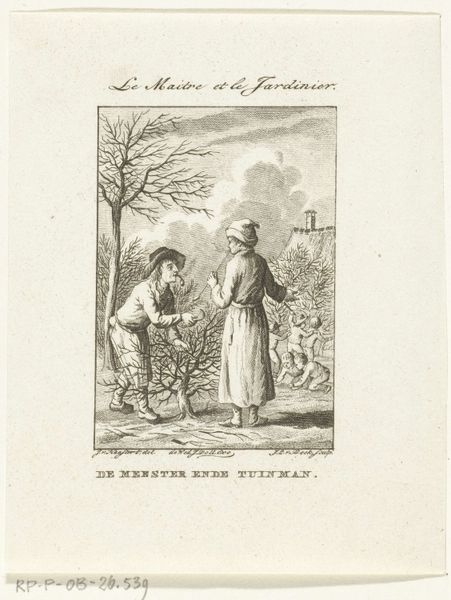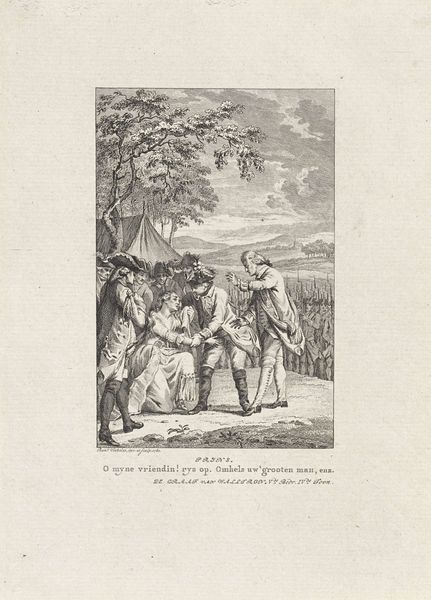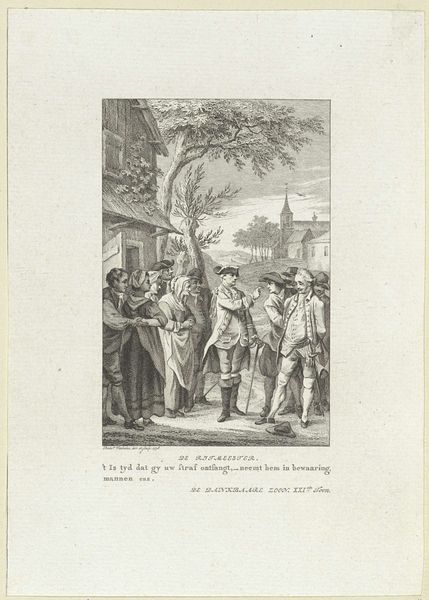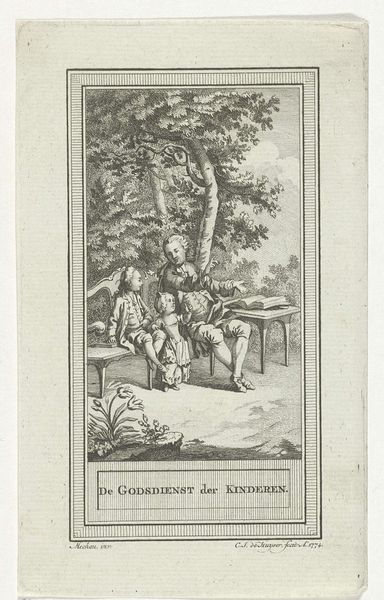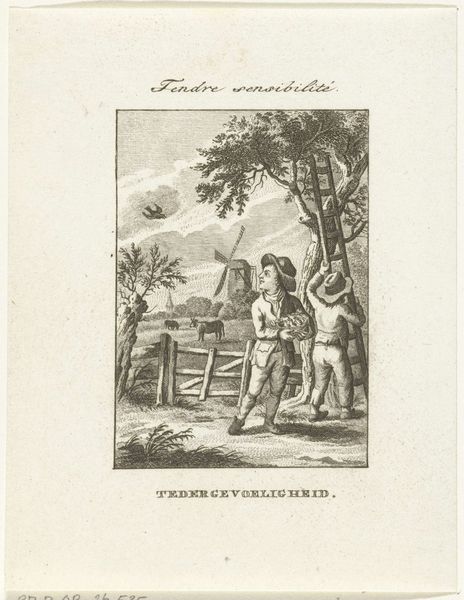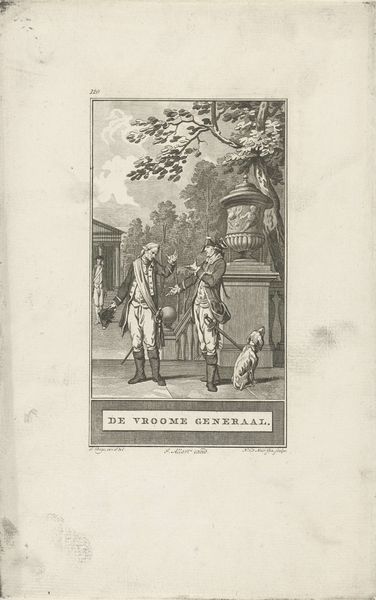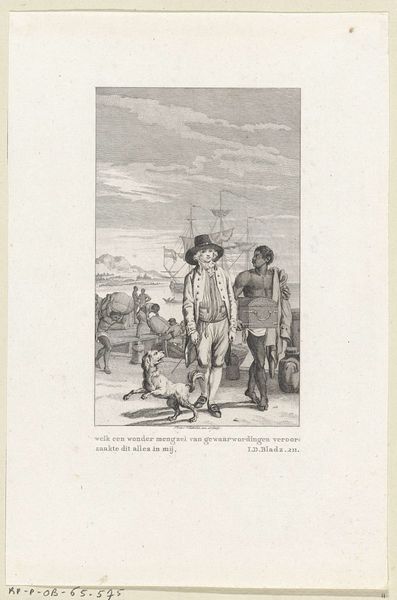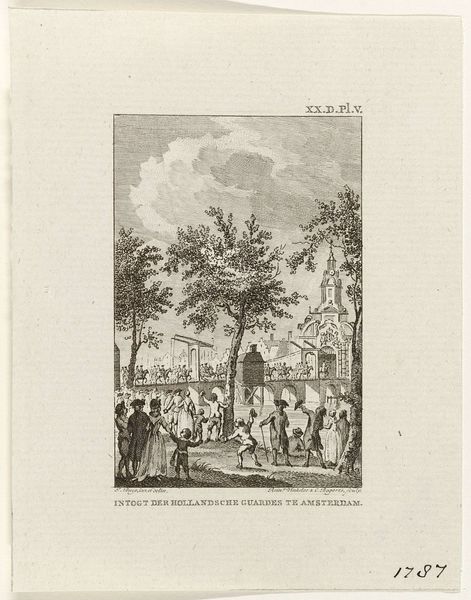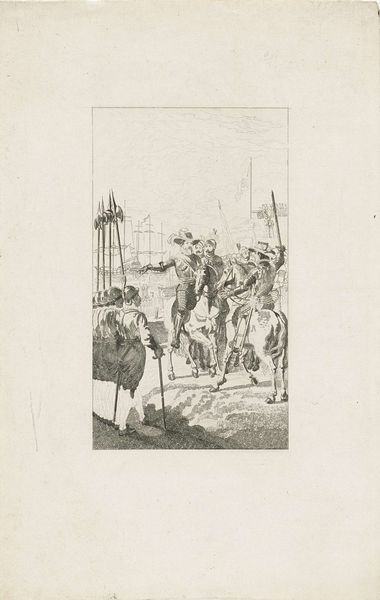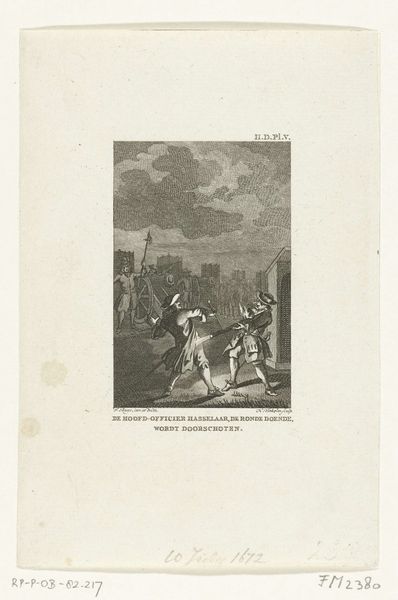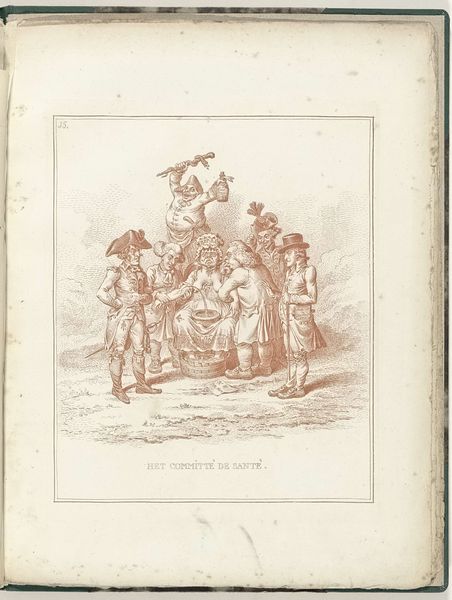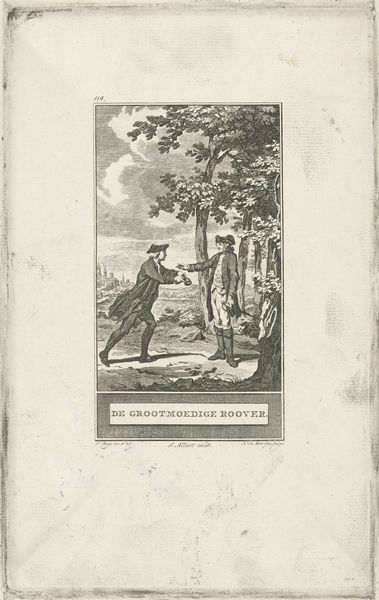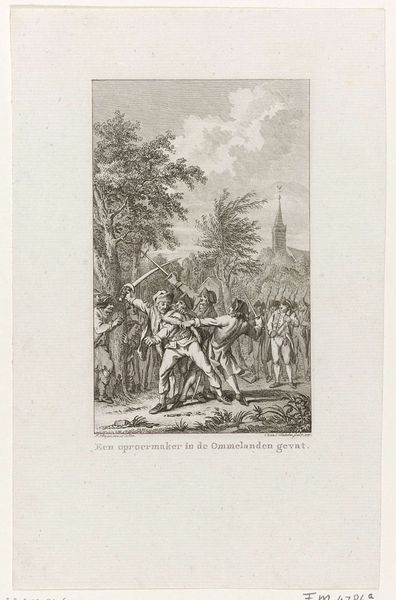
Jongen met schaatsen probeert jongen met boek over te halen op oever bij ijs 1781 - 1799
0:00
0:00
print, engraving
#
ink paper printed
# print
#
landscape
#
figuration
#
line
#
genre-painting
#
engraving
Dimensions: height 133 mm, width 103 mm
Copyright: Rijks Museum: Open Domain
Curator: This is an engraving by Jan Lucas van der Beek, made sometime between 1781 and 1799, entitled "Jongen met schaatsen probeert jongen met boek over te halen op oever bij ijs," or "Boy with skates trying to persuade boy with book on the bank by ice." The print employs line techniques characteristic of the period, rendering a detailed winter scene in ink on paper. Editor: The stark contrast between the frozen ground and the open sky really draws my eye. And there is a boy who appears to hold skates; the whole scene, rendered on a very small scale, speaks to leisure, class, and probably also of labour of some sort. Curator: Absolutely. Beyond just a snapshot of leisure, though, there’s a distinct tension presented here, right? The boy with the skates is attempting to disrupt the intellectual labor of the boy with the book. This introduces power dynamics relating to gendered expectations— perhaps studying inside, with books, was thought of to be too feminine. Editor: Interesting... I was just thinking about the production. You know, engraving is a labour-intensive process. This image, seemingly simple, would have involved meticulous handcraft. The social standing of those depicted in the scene probably contrast sharply with those doing the printing itself. The labor of creating art meets leisure of the privileged. Curator: I agree. The work makes it very clear whose experiences mattered to those who commissioned artwork in this moment in Dutch history. Note how there are two separate titles: "La Seduction manquée" and "De Mislukte Verleiding." One is in French, and the other is in Dutch. So right there, it indicates the diverse and elevated patronage. Editor: Yes! It gives even more clues about where this art object sits within a wider network of materials and audiences. How many hands it passes through gives an amazing glimpse into a specific era, a location, and even specific class and social strata. Curator: It truly is striking how van der Beek captured this particular social friction so succinctly. There’s a definite commentary on societal expectations of the time; what roles people played, whether freely or not. Editor: Indeed. Thinking through it this way really hammers home the amount of deliberate choices about not only the subject but also the craft that communicates value at the time, even now.
Comments
No comments
Be the first to comment and join the conversation on the ultimate creative platform.
